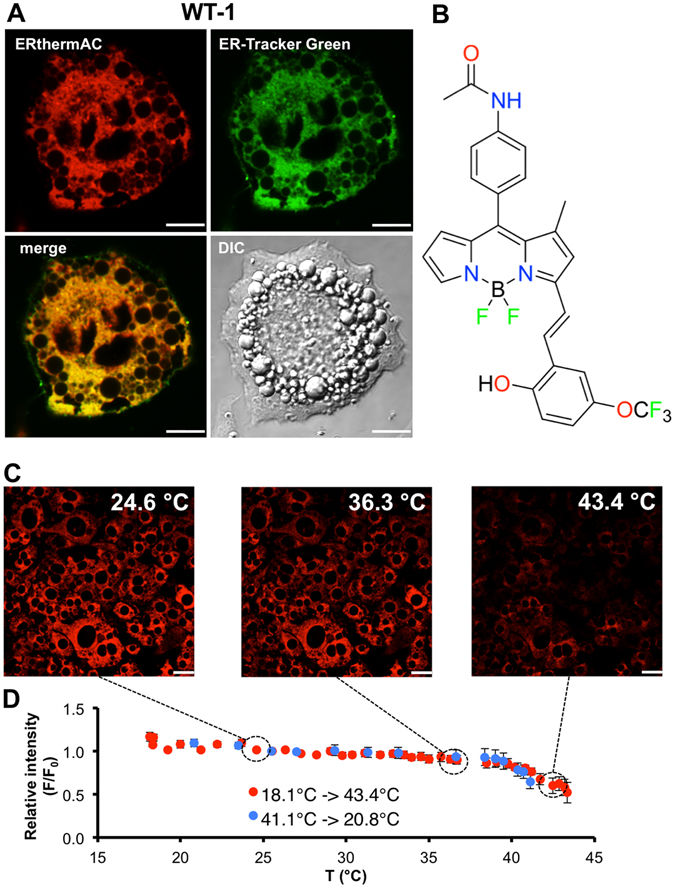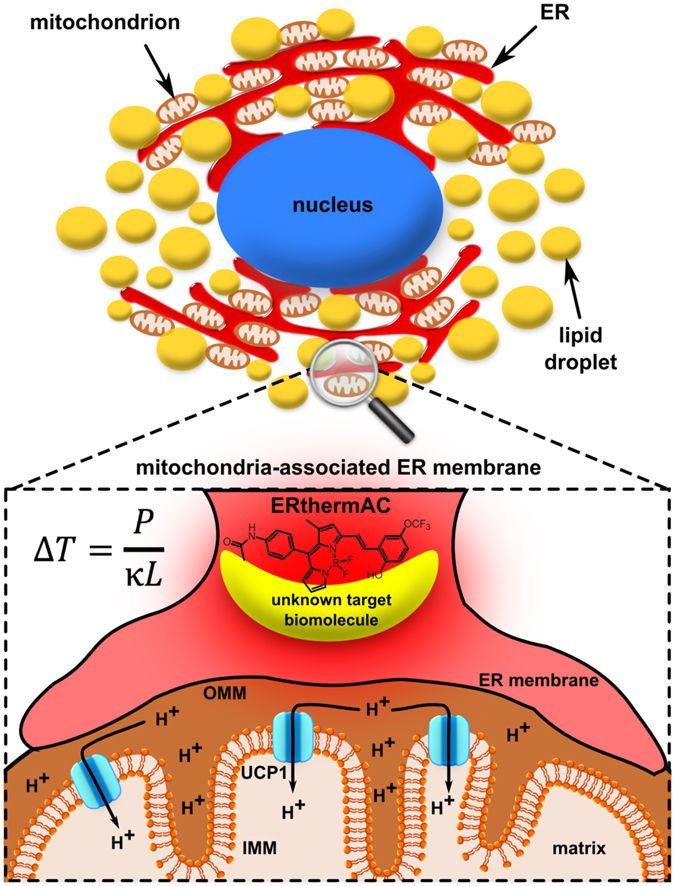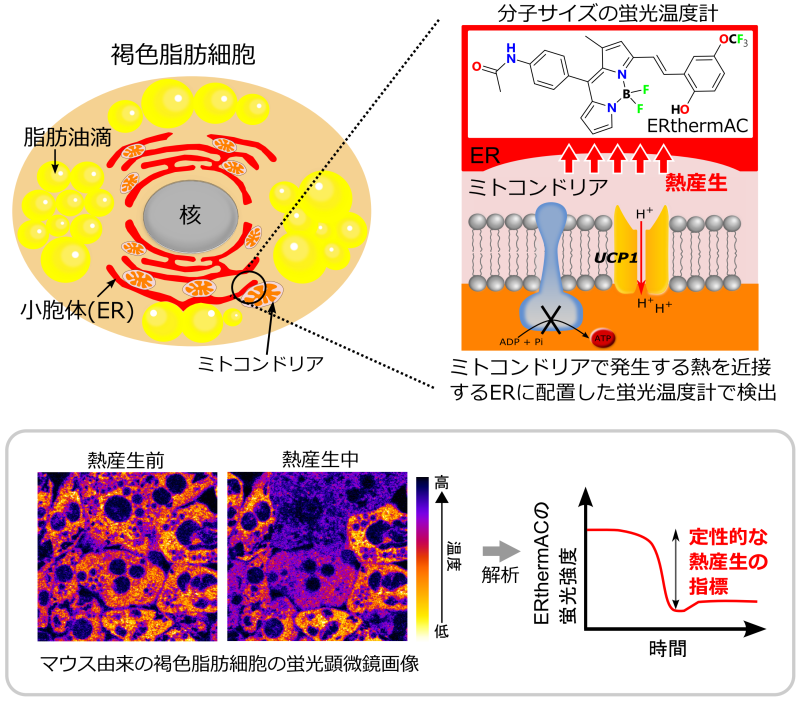Visualizing temperature changes of the heat-producing “brown fat”
Tue, May 23, 2017-
Tags
Optical visualization of thermogenesis in stimulated single-cell brown adipocytes
Potential to facilitate the development of breakthrough therapies for obesity and diabetes treatments

ERthermAC targets the endoplasmic reticulum in adipocytes, and its intensity is inversely proportional to temperature.
Researchers from Waseda University, Harvard University, and the National University of Singapore collaborated in a novel study and became the first to apply a small molecule-type thermosensitive fluorescent dye, ERthermAC. Using this dye, they monitored heat production of individual micron-sized human brown fat cells in real-time, which could lead to the development of therapies for obesity and diabetes.
Warm-blooded animals have developed metabolic processes for thermogenesis, or heat production, to maintain an optimal body temperature even under extreme cold conditions. Shivering is an example of such metabolic processes; however, they are insufficient to maintain body temperature under specific conditions, such as in newborns or during sustained cold exposure. Hence, a parallel mechanism has evolved in brown fat to protect hibernating and newborn animals.
“Brown fat believed to only exist in newborns,” explains Satoshi Arai, Assistant Professor of WASEDA Bioscience Research Institute in Singapore (WABIOS) and member of the research group, “but a recent finding showed that it is also present in adults, leading to significant interest in targeting this metabolically active tissue for treatment of obesity and diabetes.”
In order to develop treatment for obesity and diabetes using brown fat, measuring temperature change of brown fat will be the most direct and accurate way to determine the treatment’s effectiveness. A number of techniques for measuring brown fat thermal power exist, but these techniques are not yet widely applied in metabolic research because of the high cell requirements and the inability to measure individually isolated primary cells. Furthermore, an isothermal microcalorimeter has been introduced lately, but it has not been tested with brown fat.
Fluorescent thermosensors, which are capable of monitoring intracellular temperature changes of various cells, have been used as a means to measure temperature changes on a single-cell scale. This is analogous to how infra-red thermography visualizes body surface temperature distribution. However, using fluorescent thermosensors require laborious procedures for probe delivery into the cell. As such, a more user-friendly thermosensitive dye with practical advantage was sought for, leading to the innovation of ERthermAC.

ERthermAC forms a contiguous thermometer in the immediate mitochondrial vicinity by targeting the endoplasmic reticulum (ER)
Professor Arai says, “ERthermAC has biocompatible features capable of imaging heat production, such as excellent cellular uptake due to its very small size. Although there are technical limitations in quantitatively analyzing the increase of degrees with the microcalorimeter used in the study, this technique proved to be qualitatively successful in detecting heat generation.”
ERthermAC is easily taken up by cells within 30 minutes and demonstrates robust photostability, showing potential to become a fundamental technique for a more convenient screening method to develop new obesity treatments.
“Our findings suggest that ERthermAC is a promising new tool for studying thermogenic function in brown fat. We believe it will facilitate research on the mechanisms of regulating brown fat thermogenesis as well as providing new in vitro tools for testing potential modulators of thermogenesis in this unique tissue.”
This study was published in Scientific Reports on May 3.
Reference
- Published in: Scientific Reports
- Title: Optical visualisation of thermogenesis in stimulated single-cell brown adipocytes
- Authors: Rókus Kriszt, Satoshi Arai (WABIOS), Hideki Itoh, Michelle H. Lee, Anna G. Goralczyk, Xiu Min Ang, Aaron M. Cypess, Andrew P. White, Farnaz Shamzi, Ruidan Xue, Jung Yeol Lee, Sung-Chan Lee, Yanyan Hou (WABIOS), Tetsuya Kitaguchi (WABIOS), Thankiah Sudhaharan, Shin’ichi Ishiwata (WABIOS), E. Birgitte Lane, Young-Tae Chang, Yu-Hua Tseng*, Madoka Suzuki* (WABIOS) and Michael Raghunath* (*Corresponding authors)
- Affiliations: Waseda University (WABIOS), JST, National University of Singapore, Harvard University
- DOI:10.1038/s41598-017-00291-9












